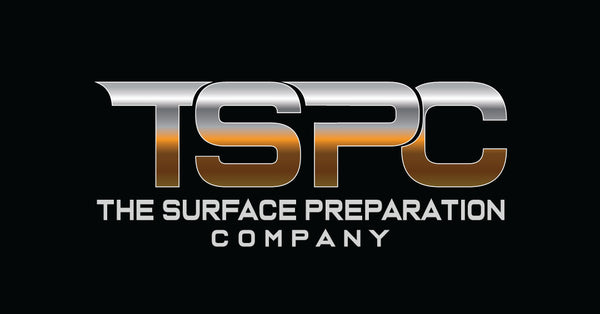Surface Preparation Standards
ISO and the NACE/SSPC joint standards
NACE International, SSPC (The Society for Protective Coatings) and ISO (International Organisation for Standardisation) provide the most commonly used and accepted industry standards for surface preparation.
Each standard defines the method of cleaning and preparing the surface, evaluating the preparation outcome and assessing readiness for application of a protective coating with optimal adhesion.
Today, NACE and SSPC have combined to form AMPP, The Association for Materials Protection and Performance. Their joint standards will continue with their traditional NACE and SSPC designations.
Solvent Cleaning
The presence of even small amounts of surface contaminants like oil, grease or oxides will reduce coating adhesion to the substrate and reduce the longevity of the coating.
All surface preparation and coating procedures must begin with a cleaning process. SSPC - SP1 is the governing standard for removing visible contaminants from steel surfaces.
This standard defines the end-condition of a metal surface from which visible deposits of oil, grease, and other contaminants have been removed in preparation for application of protective coatings, or for the use of additional methods to prepare the surface for the application of coatings.
Abrasive Blasting
Blast cleaning is generally considered to be the best method for preparing steel for protective coatings.
All applicable standards for blast cleaning require the prepared surface to be free of all visible oil, grease, dust, dirt, mill scale, rust, corrosion, oxides, existing coatings and any other foreign matter. Tolerances within the standards are listed below.

| STANDARD | ISO - Sa3 / NACE - 1 / SSPC - SP5 |
| Description | White metal blast cleaning. |
| What can remain | Nil. |
White Metal Blast Cleaning requires that each square inch of surface area be completely free of all visible residues and does not allow for any level of rust staining in the substrate.
This lack of tolerance is often considered to be too stringent for practical specification in most environments.

| STANDARD | ISO - Sa2.5 / NACE - 2 / SSPC - SP10 |
| Description | Near white metal blast cleaning. |
| What can remain | Maximum 5% stains. |
Near White Metal Blast Cleaning allows random staining (light shadows, streaks or minor discolourations caused by stains of rust, mill scale or previous coatings) to remain, limited to no more than 5% of each unit area (3-inch x 3-inch) of the surface.
The standard is typically specified for the preparation of steel for immersion, high temperature or other aggressive environments.

| STANDARD | ISO - Sa2 / NACE - 3 / SSPC - SP6 |
| Description | Commercial blast cleaning. |
| What can remain | Maximum 33% stains. |
Commercial Blast Cleaning allows random staining (light shadows, streaks or minor discolourations caused by stains of rust, mill scale or previous coatings) to remain, limited to no more than 33% of each unit area (3-inch x 3-inch) of the surface.
This standard is commonly specified for fabricated structural steel projects for atmospheric service environments.
Power Tool Cleaning
Power tool cleaning employs the use of angle grinders, needle guns and power sanders to remove loose rust and paint from the surface and, in some cases, to produce an anchor profile.
| STANDARD | ISO St3 / SSPC - SP3 |
| Description | Power tool cleaning. |
| What is to be removed | All loosely adhering materials and detrimental foreign matter. |
| What can remain | Tightly adhering materials only. |
A power tool cleaned surface, when viewed without magnification, shall be free of visible deposits of oil and grease and shall be free of all loose mill scale, loose rust, loose paint, and other loose detrimental foreign matter.
It is not intended that adherent mill scale, rust, and paint be removed by this process. Mill scale, rust, and paint are considered adherent if they cannot be removed by lifting with a dull putty knife.
The surface should not be buffed or polished smooth. SSPC SP-3 is suitable for maintenance operations and spot repairs in atmospheric exposures.
| STANDARD | SSPC - SP11 |
| Description | Power tool cleaning to bare metal. |
| What is to be removed | All visible oil, grease, dirt, rust, coatings, oxides, mill scale, corrosion and other foreign matter. |
| What can remain | Acceptable variations in appearance that do not affect surface cleanliness. |
| Surface profile | Minimum 1mm surface profile required with no smooth or unprofiled areas. |
A bare metal power tool cleaned surface, when viewed without magnification, shall be free of all visible oil, grease, dust, dirt, mill scale, rust, coating, corrosion products, and other foreign matter with the exception of trace amounts of coating and corrosion products in the lower portion of pits on pitted substrates.
A surface profile of not less than 1mm (25 microns) must be achieved with no smooth, unprofiled areas.
This standard is suitable where a roughened, clean, bare metal surface is required, but where abrasive blasting is not feasible or permissible. It is often specified for spot repairs to coating systems in immersion or other severe service environments.
This standard differs from SSPC-SP 3 which requires the removal of loosely adherent materials only, and contains no requirement to expose bare metal or to achieve a minimum surface profile.
This standard differs from SSPC-SP 15, Commercial Grade Power-Tool Cleaning, in that SSPC-SP 15 allows stains to remain on up to 33% of the surface.
